Secret Ice Rink
Remembering the San Francisco Ice Arena, once hidden in the the middle of a Sunset District block.
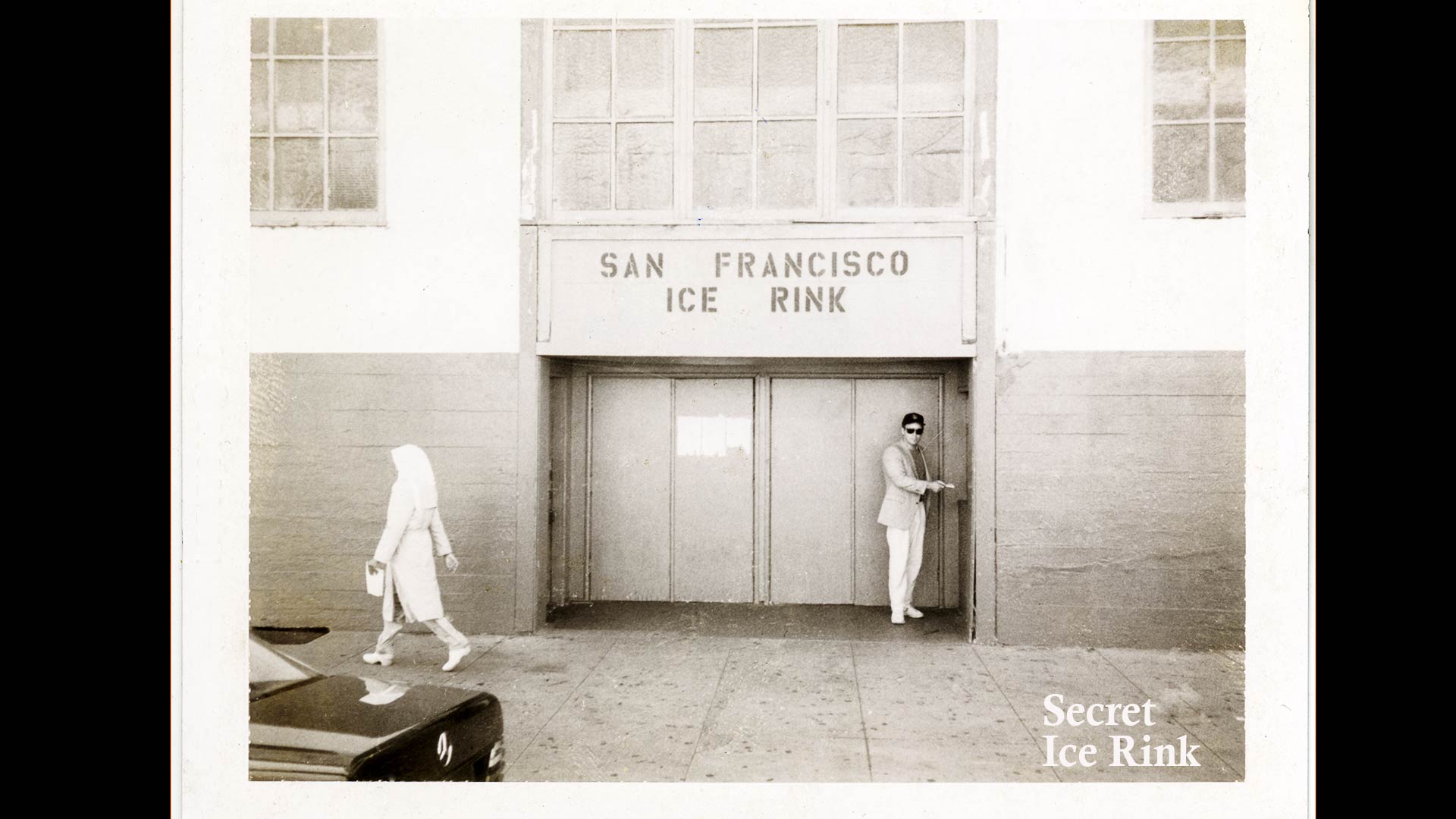
I first went there with my Cub Scout troop for a special evening outing. We followed our den leader, Mr. Smalley, down a dark residential street, passing one stucco house after another. We nine-year-old boys walked in a snaking line behind the adults.
The fog was in and the few streetlights fizzled a yellow aura. A hundred yards off the relative bustle of Judah Street, I decided that Mr. Smalley must be lost. Then, in the middle of the block, I saw light slanting out the doorway of a big box.
The adults paid. We shuffled in. Cold air with a strange metallic smell enveloped us. Colored lights flashed and Robert Plant was moaning about ramblin’ on. Long-haired teenagers looped in a corralled rink with one girl spinning by herself in the center.
I’d grown up in San Francisco. I’d never seen snow. I’d never seen anyone ice skate, even on television. Now, in the middle of a block of houses in the Outer Sunset District, I had entered Narnia.
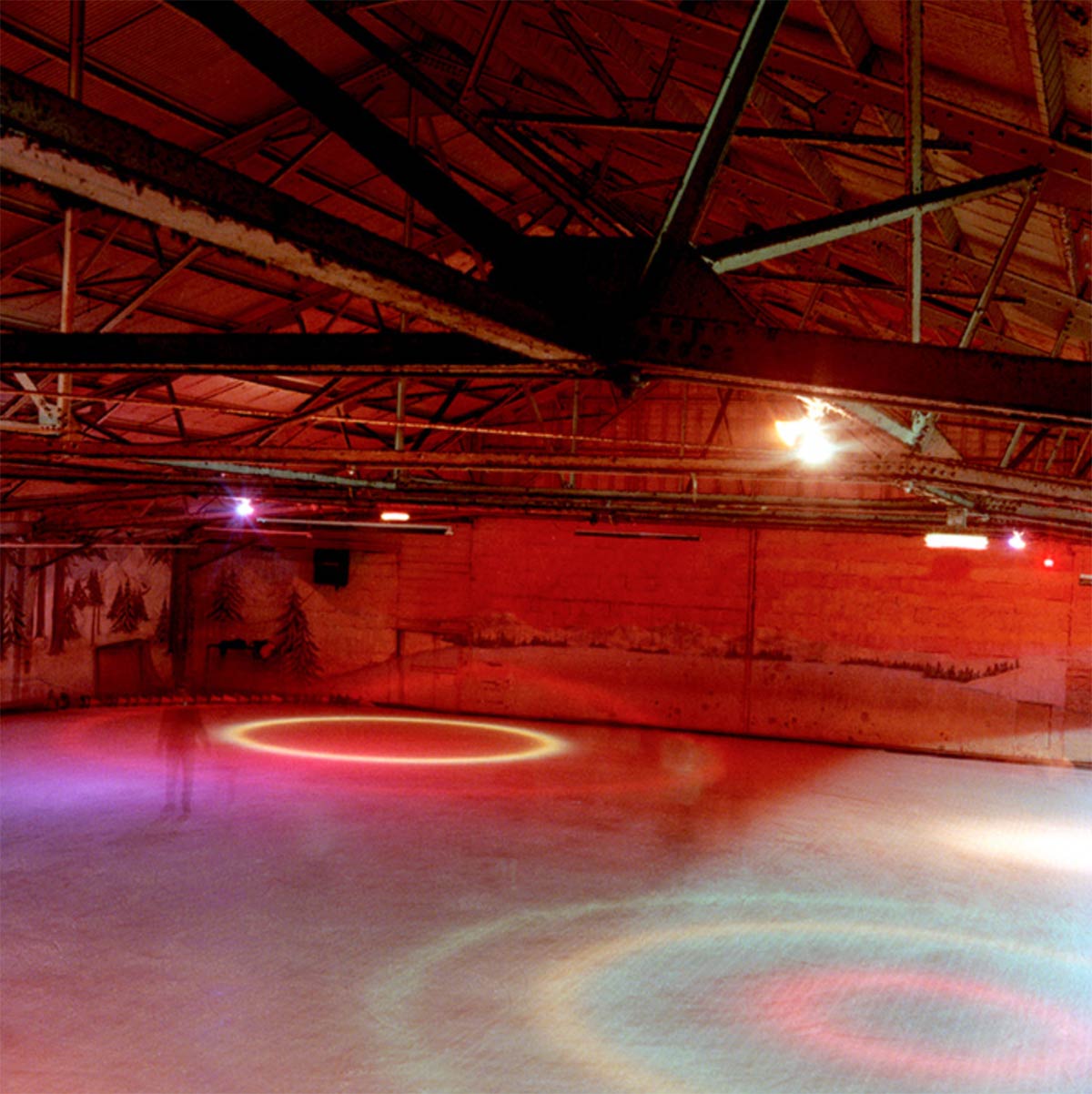
The San Francisco Ice Arena opened in March 1926 at 1557 48th Avenue with a 1.35-ton ice machine and a steel and glass wall facing the ocean. The Ocean Beach area had become San Francisco’s recreation zone, from Sutro Baths and Playland down to the then-new Fleishhacker Pool and Zoo at Sloat Boulevard.
An ice-skating rink fit in perfectly with the roadhouses and waffle stands that dotted the Great Highway. In the 1920s, there were still plenty of empty lots to build on and the owners advertised “unsurpassed motor parking.” Hundreds of families had begun moving into the neighborhood.
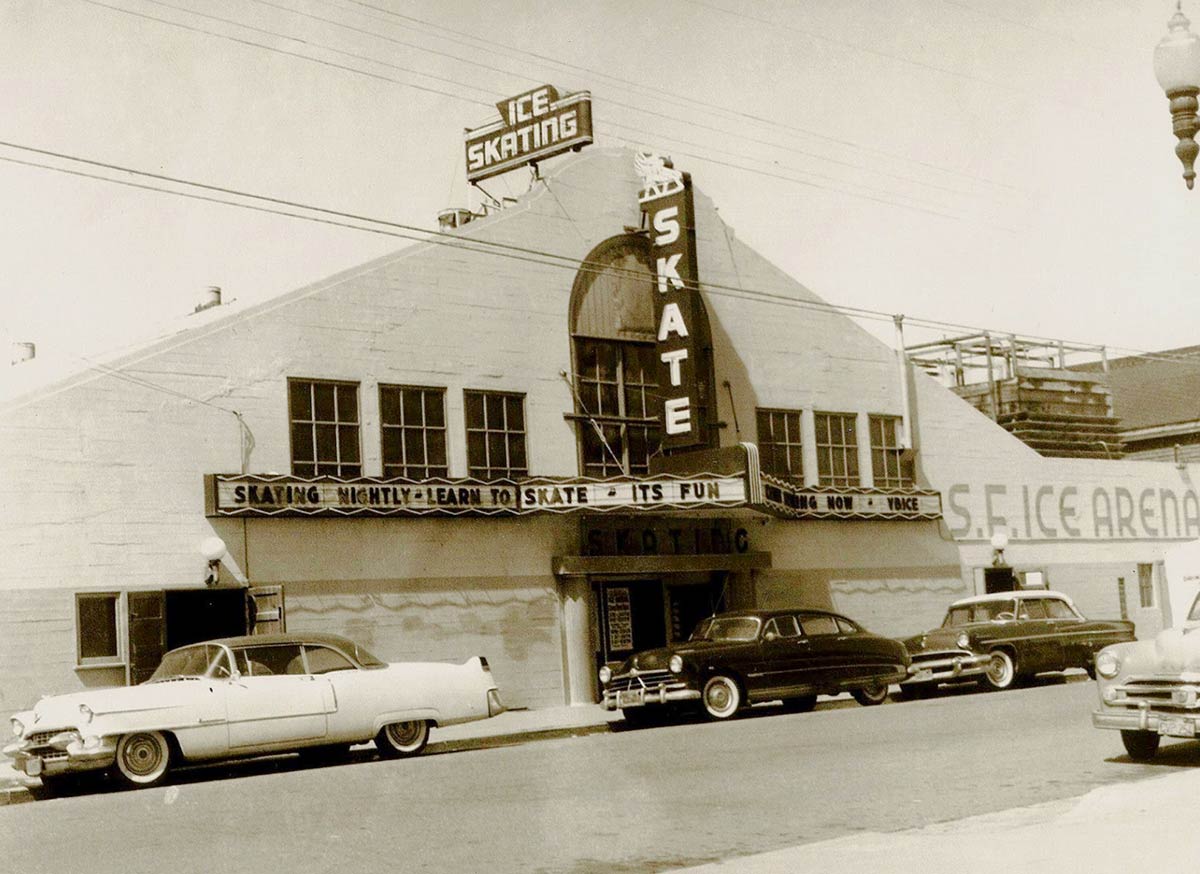
Frances Larkin lived on Kirkham Street, around the corner from the rink. While her family didn’t have the money to let Frances skate, the Ice Arena provided a cheaper form of recreation in the 1930s.
“When they would scrape the ice, they’d push it out the back door. We just thought those were piles of snow. We’d get a bucket and gather it up to make what we thought were snowballs. We’d throw them at the automobiles as they went by.”
J. Hugh Visser, who lived on the 1400 block of 48th Avenue, was one of the boys pushing the used ice out through the back door. His crew used squeegees with long handles in those days before Zamboni machines. “Ma” Campbell, who ran the ice rink like a Navy captain, paid Visser with free passes to skate. “At one time I had a stack of 30 or 40 free passes stuffed in my wallet.”
Fueled by cheap federal housing loans, residential construction in the Sunset boomed in the 1930s. The San Francisco Ice Arena was hemmed in, almost hidden, by new homes. The rink’s glazed-glass back wall was lost in early renovations, replaced by a large winter-themed mural of a mountain lake vista with skaters framed by pine trees. Sometimes known as “Iceland,” the rink also had to advertise very particularly at times as “48th Avenue Ice Rink” just so people could find it.
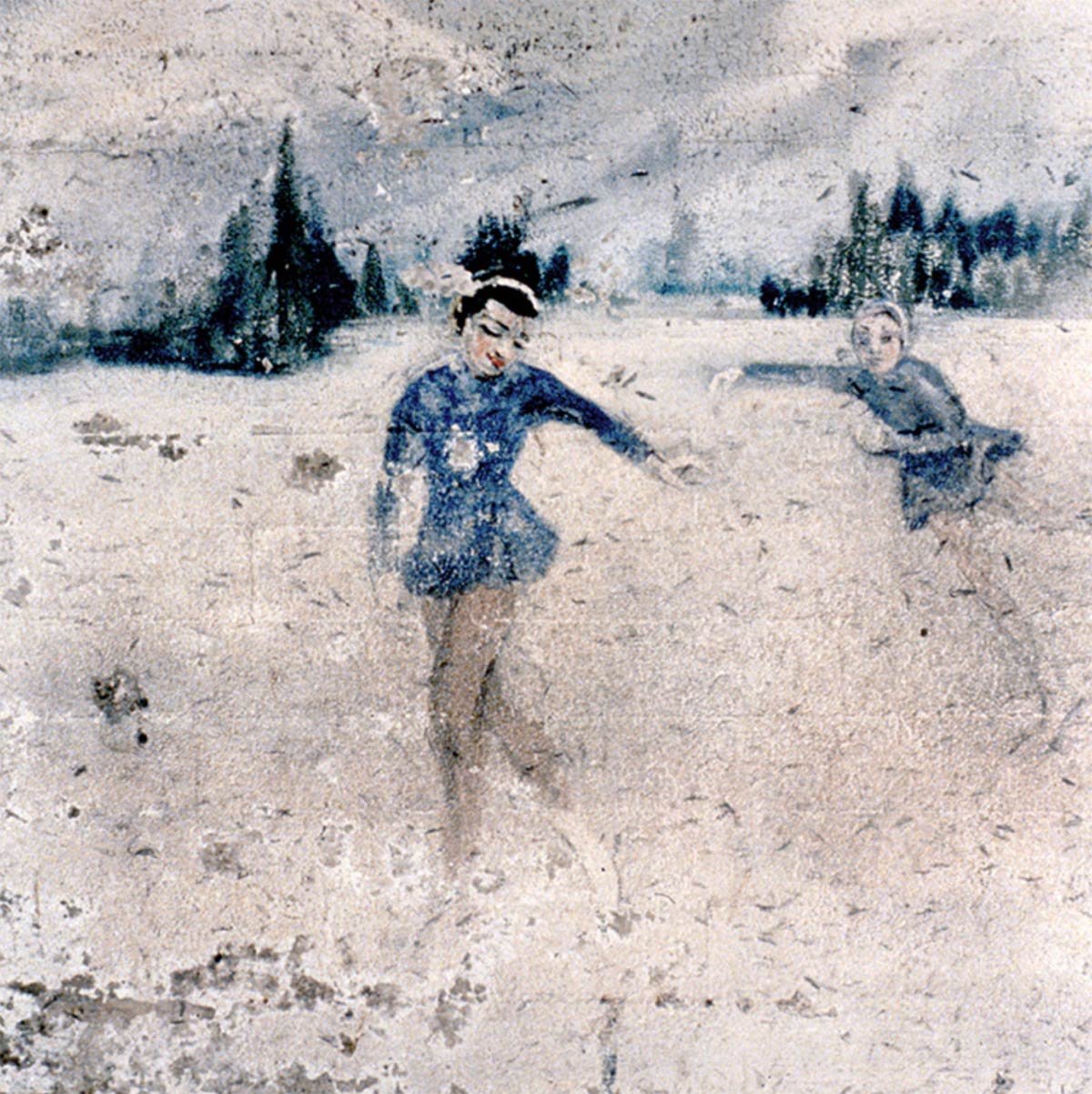
Frank Grant remembered the “icy cold feeling, the odor of the wet flooring chewed up with ice skates, the scratchy music, and the very uncomfortable rental skates.” But Grant still thought of it as a thrill to have a rink right in the neighborhood. In those days of snazzy dress one skating teacher wore a full suit and bow tie during lessons.
The Ice Follies came to rehearse new shows in the summer and by the 1950s some of the stars—Hugh Hendrickson and Joe and Marlene Thurston—took over operation of the rink. They had competition. Phyllis and Harris Legg opened a rink on Ocean Avenue and later another on 11th Street. Up the road from the Ice Arena, the Sutro family tried to turn around business at Sutro Baths by replacing an aging swimming tank with an ice-skating rink.
In 1959, Hendrickson was tragically electrocuted at the Ice Arena during renovation of the brine pump and for the next thirty years the Thurstons became the face of the business. Marlene Thurston acted as director of the skating school. Many remember the Thomas twins, a skating duo that gave lessons for years. Longtime employees included a man named Emery who checked out rental skates, and an older woman named Flo who operated the concession stand in the back.
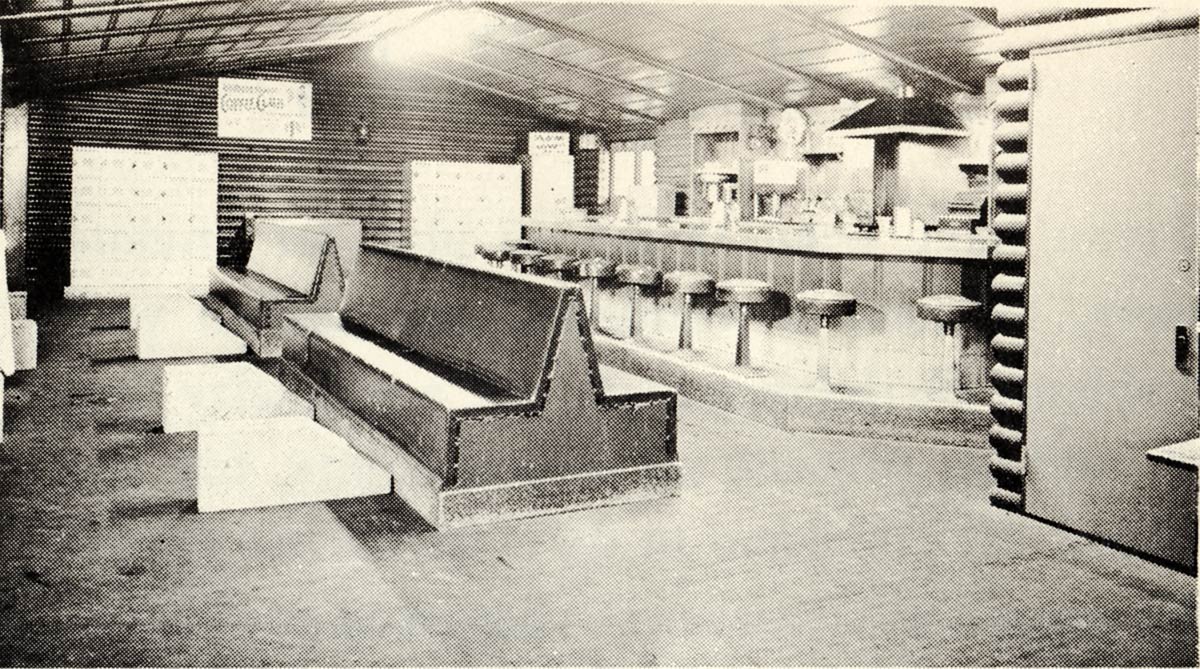
That corner of the building tried to resemble a rustic cabin or ski lodge with log posts and a shed roof. I was never a great skater, so as a teen I drank a lot of hot chocolate watching girls from the concessions.
The common traditions prevailed: men-only or women-only skates, when each gender had the rink to itself for a song. The anticipated “couples” skate meant the management cued up the colored lights and the Bee Gees sang “How Deep Is Your Love?”
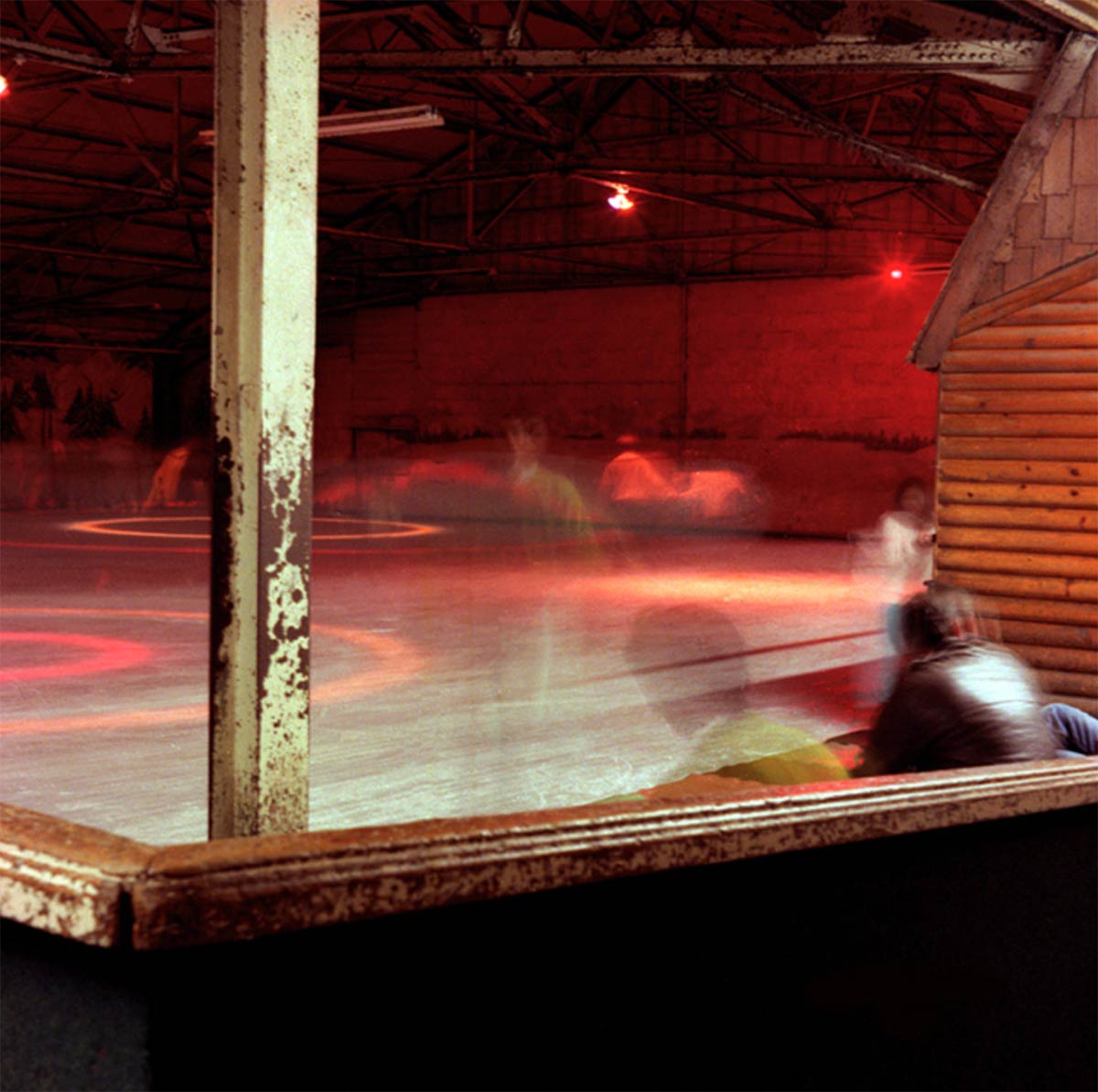
The special skates were announced by a loud horn and a light board with directions that included “All Skate,” “Grand March” (lines of couples), and “Reverse,” when everyone glided around in the opposite direction (clockwise, I believe).
There were lots of kid birthday parties. San Francisco Ice Arena had a special party room with cartoon murals of woodland creatures. There was a Junior Hockey League. Skating shows let students demonstrate progress and old pros their Ice Follies chops (Skippy Baxter would do back-flips on ice). In an era of lots of stay-at-home moms, the arena hosted a Ladies Coffee Club every Thursday morning.
For many years there was a Christmas tree standing in one corner of the rink, which made for an inviting target for boys bumping their friends on the turns. Teenagers came for the night skate sessions and in the 1970s and 1980s rock music and video games both became part of the Ice Arena experience.
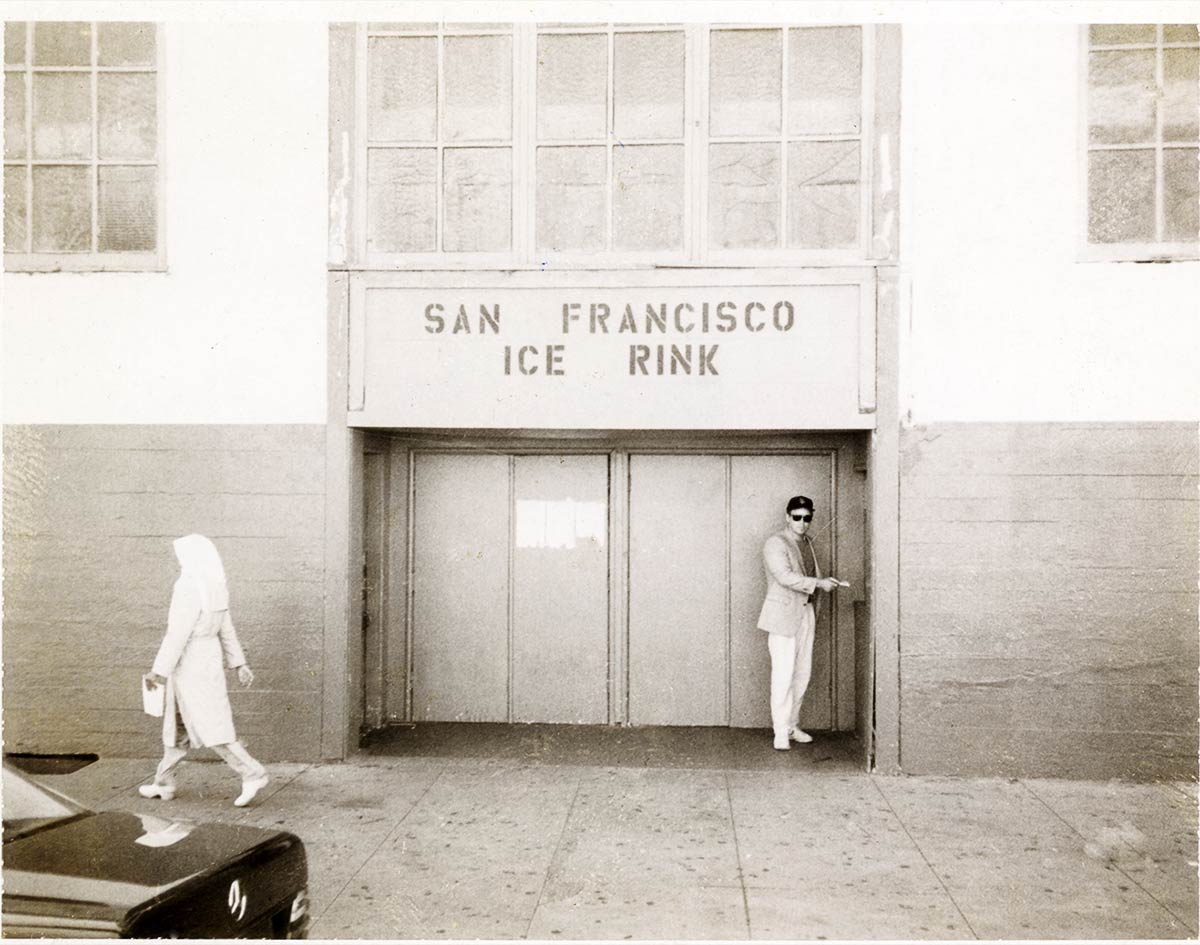
My memories include playing Pong and Space Invaders. Karen Poret (F.O.W.) remembers a machine that dispensed frozen chocolate-covered bananas. Everyone recalls the fat black rubber floors off the rink, the wooden bathroom stalls, and doing the “hokey-pokey” on ice.
The last time I visited the Ice Arena was with a new girlfriend in the mid 1980s. It seemed like a quaint, almost ironic activity for a date. We were in our early 20s and felt ourselves too old or too young for ice-skating. The back mural was faded—the painted girl with her hands in a muff (perhaps the artist had a hard time with hands) was flaking off the wall. The rust on the roof girders was thick enough to be worrisome.
But we actually had a terrific time.
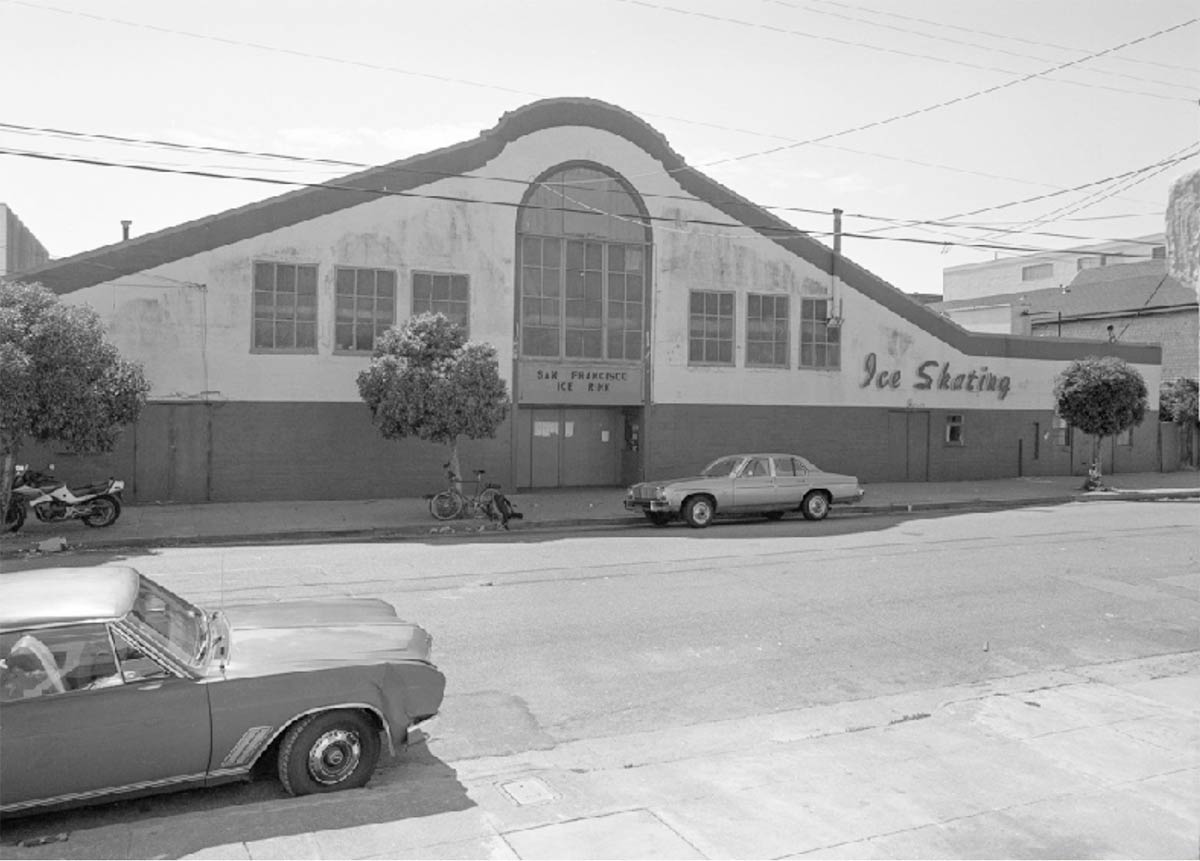
As business dried up, the building crumbled, liability insurance became unattainable, and the Thurstons finally decided to throw in the towel. The family attempted to find new stewards of the San Francisco Ice Arena—there was talk of the city buying it—but in the end the building was demolished on July 8, 1991.
A row of very un-Narnian condominiums went up the next year.
Woody Beer and Coffee Fund

See, it doesn’t have to be coffee or beer. Some kind of sparkling amber elixir was the choice last night. The point is to push me to get out and socialize with interesting people like you. Thanks to Vincent C. (F.O.W.) for his contribution this week to the drink-something-and-chat-with-Woody fund. Kick in if you’d like. When are you free? I’ll stand you a hot cider or a smoothie or ambrosia, if they have it.
Sources
Thanks to contributors to the Western Neighborhoods Project message boards for their memories of the San Francisco Ice Arena, and to Nicole Meldahl, who wrote a nice history of the rink at outsidelands.org.
Also, you can listen to this Outside Lands San Francisco podcast for more on the Ice Arena.

